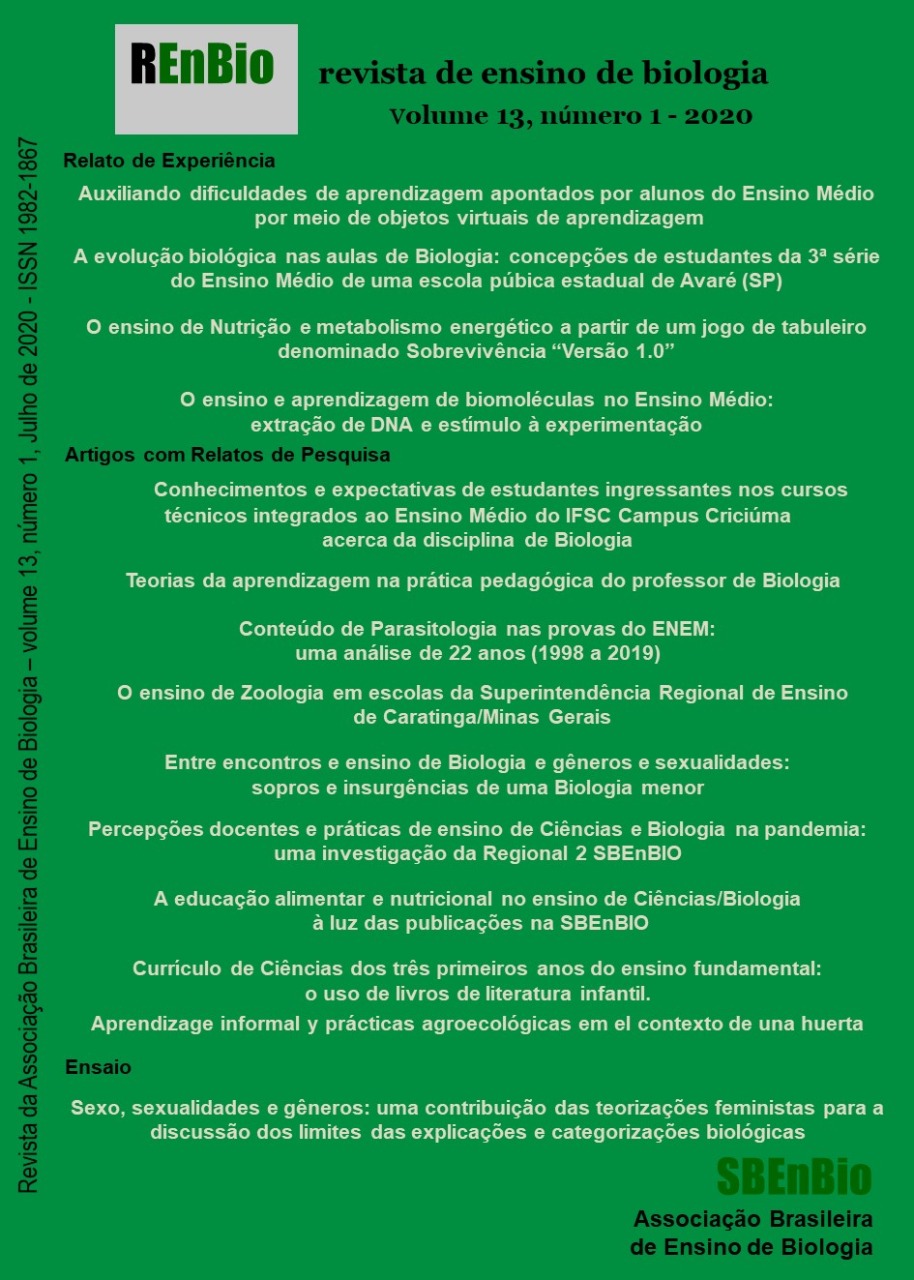Science curriculum of the first three years of elementar school the use of children’s literature books
Main Article Content
Abstract
This study aims to understand which norms and standards regulate the science curriculum of the first three years of elementary school using children's literature books. The curriculum is understood as socially and historically constructed due to disputes in disciplinary communities, which result in the valuation of certain forms of knowledge. Books are conceived as school objects that carry traces of school culture. Methodologically, four teachers’ interviews and two children's literature books are analyzed. The results have indicated that the use of these objects is linked to subversive practices, revealing the inventive nature of teaching activities to articulate literary texts and the Science curriculum.
Downloads
Article Details

This work is licensed under a Creative Commons Attribution-NonCommercial-NoDerivatives 4.0 International License.
Aviso de Direito Autoral Creative Commons
 https://creativecommons.org/licenses/by-nc-nd/4.0/
https://creativecommons.org/licenses/by-nc-nd/4.0/
Autores que publicam nesta revista concordam com os seguintes termos:
- Autores mantém os direitos autorais e concedem à revista o direito de primeira publicação, com o trabalho simultaneamente licenciado sob a Licença Creative Commons Attribution que permite o compartilhamento do trabalho com reconhecimento da autoria e publicação inicial nesta revista.
- Autores têm autorização para assumir contratos adicionais separadamente, para distribuição não-exclusiva da versão do trabalho publicada nesta revista (ex.: publicar em repositório institucional ou como capítulo de livro), com reconhecimento de autoria e publicação inicial nesta revista.
- Autores têm permissão e são estimulados a publicar e distribuir seu trabalho online (ex.: em repositórios institucionais ou na sua página pessoal) a qualquer ponto antes ou durante o processo editorial, já que isso pode gerar alterações produtivas, bem como aumentar o impacto e a citação do trabalho publicado (Veja O Efeito do Acesso Livre).
References
BENITO, A. E. A escola como cultura: experiência, memória e arqueologia. Campinas, SP: Alínea Editora, 2017.
BENITO, A. E. Patrimonio material de la escuela e historia cultural. Revista Linhas, v. 11, n. 02, p. 13-28, jul./dez. 2010.
CRONIN, D. Diário de uma minhoca. São Paulo, SP: Companhia das Letrinhas, 2004.
FURNARI, E. Cocô de passarinho. São Paulo, SP: Moderna, 2013.
GOODSON, I. F. A construção social do currículo. Lisboa: Educa, 1997.
GOODSON, I. F. Currículo: teoria e história. Petrópolis, RJ: Vozes, 2013.
LAJOLO, M.; ZILBERMAN, R. Literatura infantil brasileira: história & histórias. São Paulo, SP: Ática, 2007.
LOPES, E. M.; SALOMÃO, S. R. O uso da literatura no ensino de Ciências no primeiro segmento do ensino fundamental: desafios e possibilidades. In: ENCONTRO NACIONAL DE PESQUISA EM EDUCAÇÃO EM CIÊNCIAS, 7., Florianópolis, 2009. Anais...Florianópolis: UFSC, 2009.
MORAES, B. G. S. Materiais didáticos como “inovações” curriculares: entre saberes docentes e “tradições” da disciplina escolar Ciências. 129f. 2015. Dissertação (Mestrado em Educação) - Universidade Federal do Rio de Janeiro. Rio de Janeiro, RJ, 2015.
POPKEWITZ, T. S. História do currículo, regulação social e poder. In: SILVA, T. T. (Org.). O sujeito da educação: estudos foucaultianos. 8.ed. Petrópolis, RJ: Vozes, 2011.
POPKEWITZ, T. S. Social epistemology, the reason of “reason” and the curriculum studies. Education Policy Analysis Archives, v. 22, n. 22, p. 1-23, abr./ 2014. Disponível em: http://dx.doi.org/10.14507/eppopkewitzaa.v22n22. 2014. Acesso em: 20/04/2018.
QUEIROZ, L. S. Currículo de Ciências nos anos iniciais do Ensino Fundamental: materiais didáticos utilizados em colégios universitários do Rio de Janeiro.128f. 2019. Dissertação (Mestrado em Educação) - Universidade Federal do Rio de Janeiro, Rio de Janeiro, RJ, 2019.
VIDAL, D. G. Cultura e prática escolares: uma reflexão sobre documentos e arquivos escolares. In: SOUZA, R. F.; VALDEMARIN, V. T. (Org.). A cultura escolar em debate: questões conceituais, metodológicas e desafios para a pesquisa. Campinas, SP: Autores Associados, 2005.

